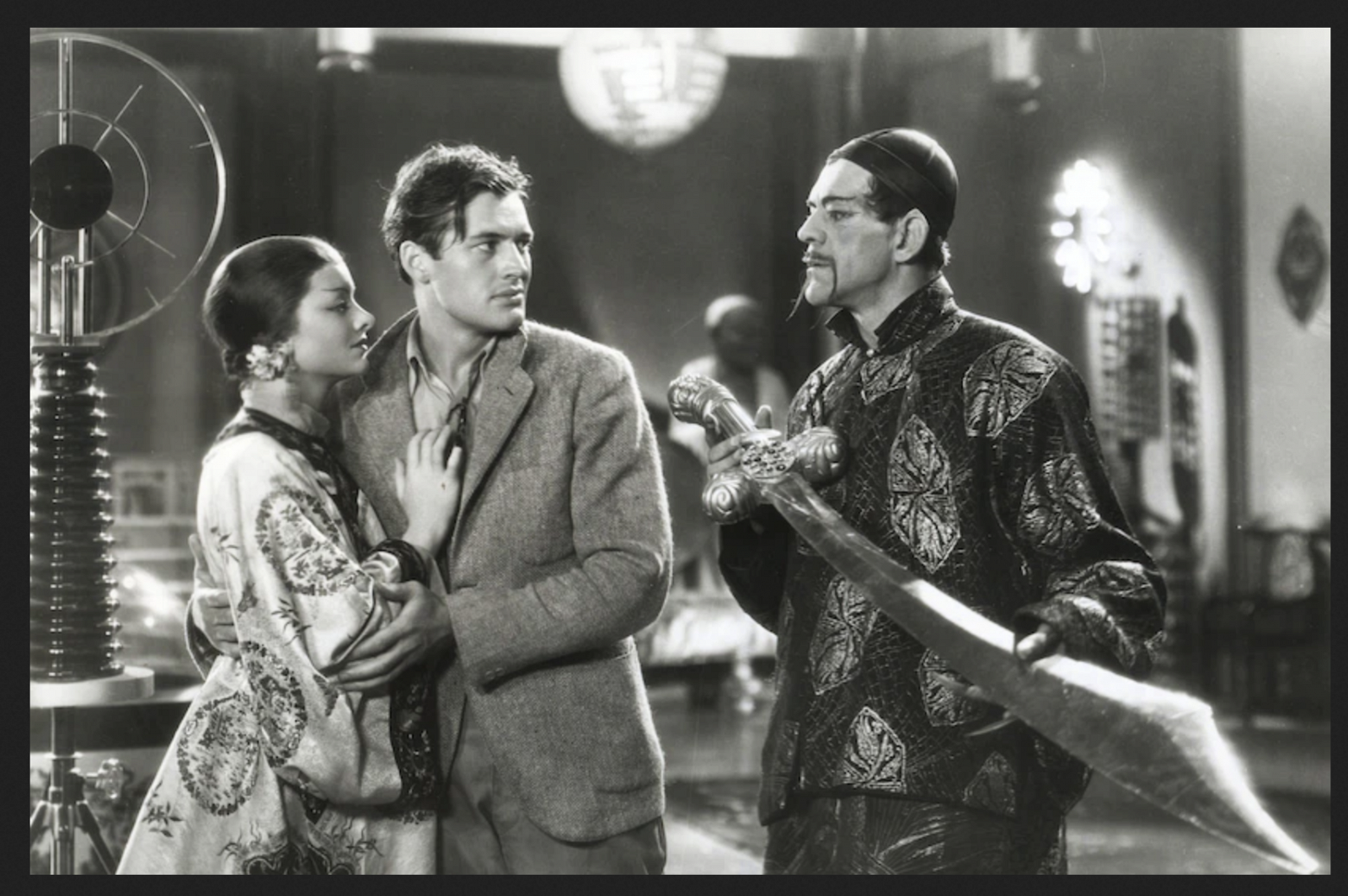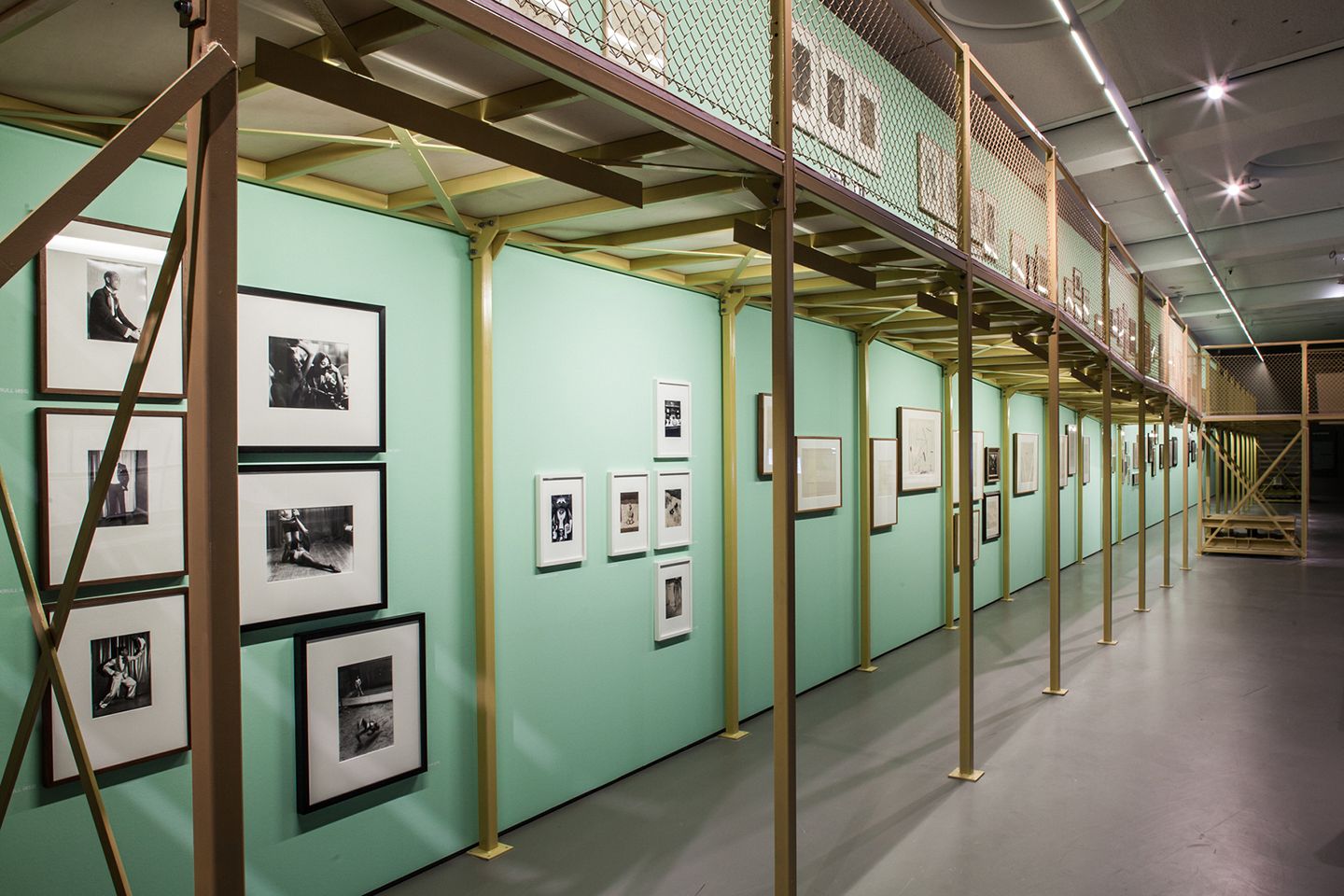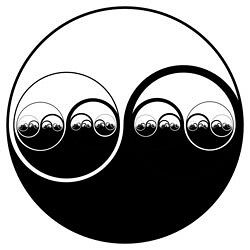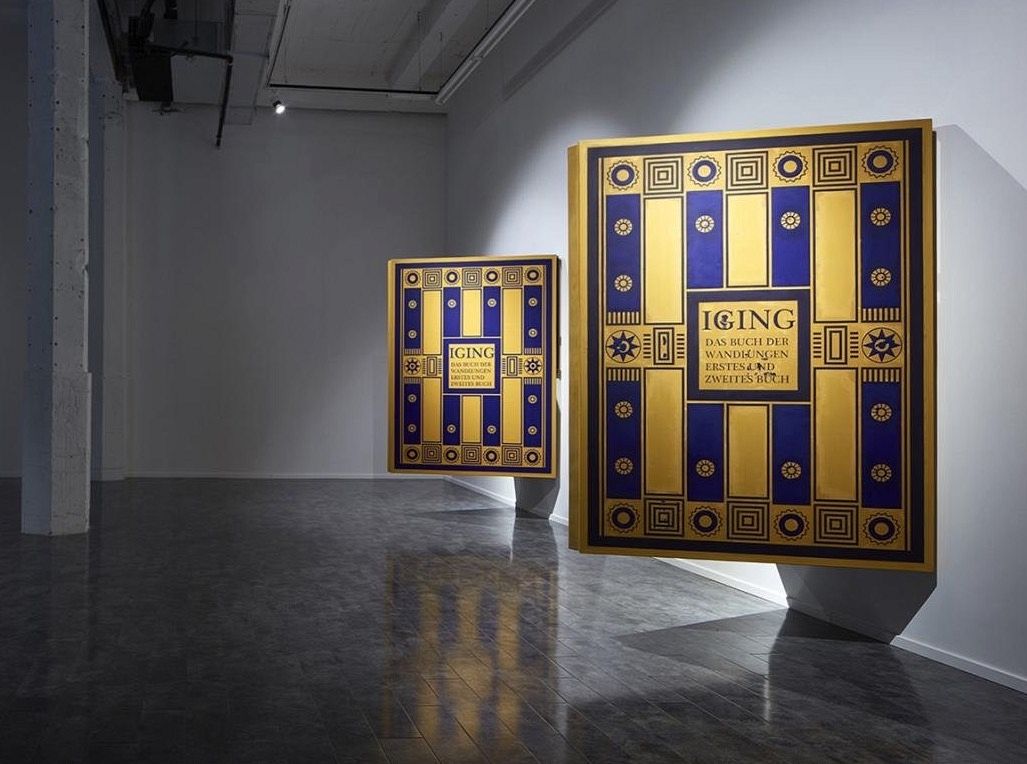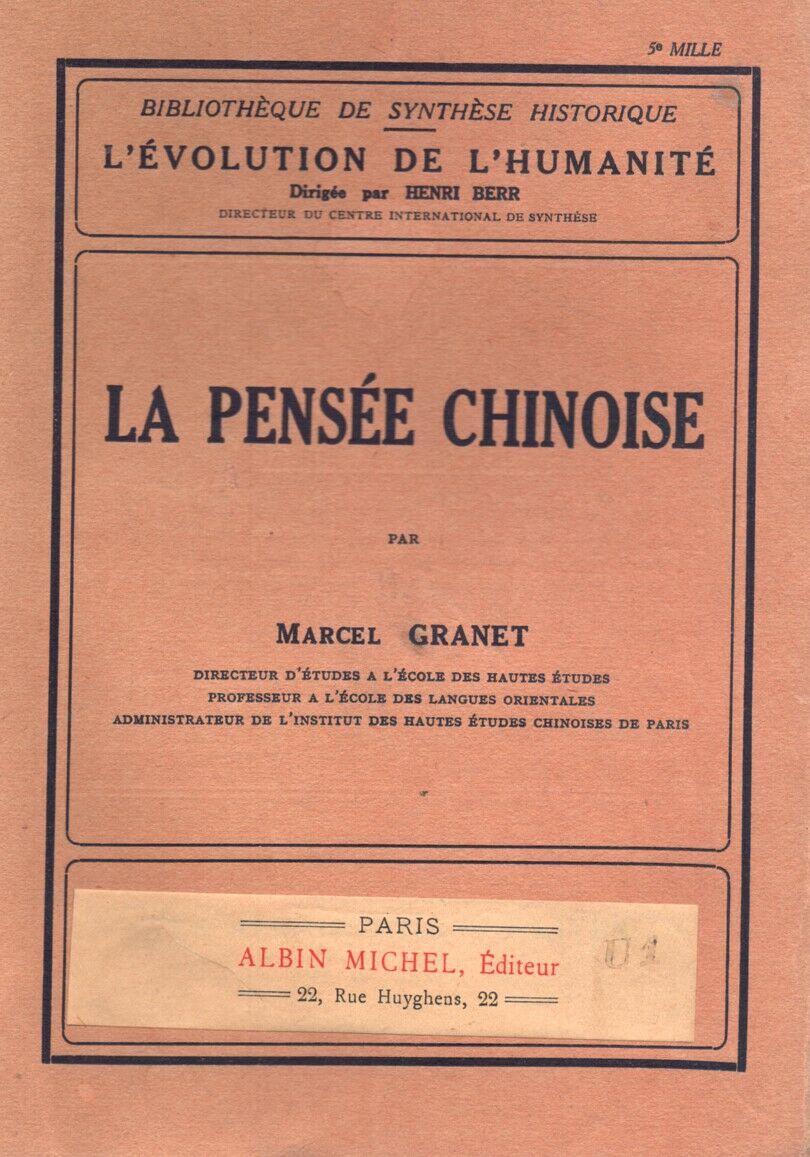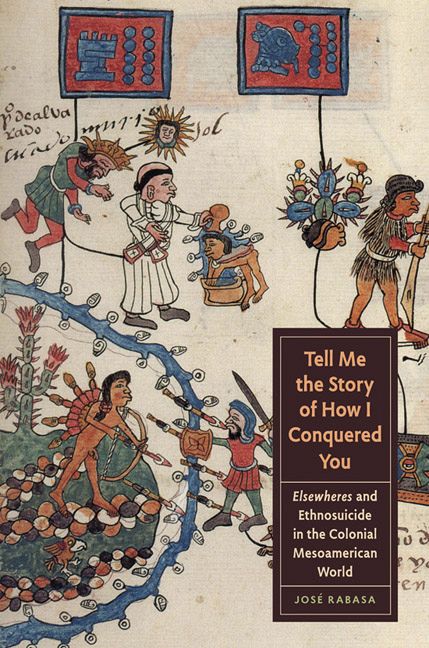1The text was originally presented on the “Deep Time and Crisis, c. 1930” conference held in Haus der Kulturen der Welt, Berlin, in May 27, 2018, as part of the curatorial program Neolithic Childhood. Art in a False Present, c. 1930.
In an article published in 2012 in e-flux journal, the Slovenian philosopher Mladen Dolar opens his discussion on the Lacanian psychoanalytic numerology between the numbers one and two with what he calls “a Maoist slogan from the 1960s,” titled: “one divides into two.” He laments that not only does the slogan sound dated today, but students wouldn’t understand it: “None will have ever heard it or have any inkling as to its bearing or its author––it’s almost like speaking Chinese.” 2Mladen Dolar, “One Divides into Two,” e-flux Journal #33, March 2012. https://www.e-flux.com/journal/33/68295/one-divides-into-two/. My immediate reaction, as a Chinese speaker, was not only one raised eyebrow, but in fact, two: how can one, in 2012, still make such a stupid joke. In the same paragraph, the author invokes an infamous early debate of the Chinese Communist Party and uses an age-old colonial trope of the inscrutable Chinese as its comic relief. While the critique of orientalism in the humanities has become repetitive, flattened, and almost dogmatic, it seems politically necessary to revisit its critical premise.
But let me analyze my own reaction first: why was I particularly shocked by the joke? Because it was made in 2012, to emphasize that the Maoist slogan allegedly sounded dated and foreign to his young students. In a nutshell, the Chinese language, used by nearly one-fifth of the world’s population and widely studied across the globe, was invoked through its alleged unintelligibility to illustrate the slogan’s temporal backwardness and spatial foreignness of a politico-philosophical speculation that the author set out so he could to continue to find a Lacanian solution.
Would I have had the same reaction if this were an article from 1932? While I would no longer feel personally offended watching a film about Fu Manchu in 1932, or reading The Face of Fu Manchu in 1965, this seemingly unimportant detail from a 2012 essay did make me feel unease. My double-standard towards 2012 and 1932 seems to suggest that racism or any other structural prejudice should have an expiry date. I thought by now, as China has been largely reported, analyzed, and critiqued as a global power, rather than a victim of European colonialism, the idea of the inscrutable Orient would have already become history. Surely, I am trapped in the teleological idea of History’s linear progress and progression. I am lured into believing it gets better.
Similar to my reaction to a racist joke in a progressive critical journal, I have been in disbelief at our current turmoil and crisis of the past years: the specter of fascism with Donald Trump’s election, the recent Israeli massacre of Palestinians in Gaza, and, needless to say, the AfD’s entry into the German parliament, to name but a few extreme examples. Let me take “the inscrutable Chinese” as the placeholder of the inscrutable “Other” (the primitive, the barbarian, the refugee, you name it) that continues to haunt “the Eurocentric.” It does not have an expiry date. It is a structural node of ethnocentrism, of the very historiography in which the story of thinking has been told and retold.
Upon entering the exhibition, Neolithic Childhood. Art in a False Present, c. 1930, I encountered––somewhat anachronistically and mythically––all the ethnic others are sitting next to each other: Aztec, Babylonian, and Chinese. The display took Carl Einstein’s Handbuch der Kunst as its operative center, exhibiting the European collection of the ancient arts, literatures, and philosophies, as well as an even older and primordial time-immemorial invoked by these images and texts, positioning them as theoretical resources for rethinking contemporary questions of gender and sexuality, cosmopolitan entanglement, and political emancipation in the 1930s. As a response to the exhibition’s endeavor to scramble the “purity” of the European avant-garde and the linear idea of history, I’d look at some instances when yin-yang, the focal point of my theorization of transdualism, appears in European intellectual history of the 1930s. This may also shed light on what has persisted, what may look stunningly familiar to us, almost a century later.
Two very important works on Chinese philosophy appeared around precisely the period of Fu Manchu’s 1930s: German theologian and sinologist Richard Wilhelm’s translation (with the help of his Chinese colleague Lao Naixuan) of canonical works of Chinese philosophy appeared in 1924 as Yi Jing, Das Buch der Wandlungen; and the French sociologist Marcel Granet’s 1934 monograph La Pensée Chinoise. I will begin by introducing yin-yang transdualism. We will then look at specifically how yin-yang transdualism posits a critique of the logic of “either/or” and supersessionism in the context of contemporary debates around so-called “postcolonial totality.” In the closing paragraph, we will briefly fly back to the ‘30s to revisit the dizzying trafficking of ideas across the globe as a decentered historiography of pervasion.
1. Yin and Yang
Now let us begin by asking a basic question: what is yin-yang? A shorthand explanation often describes yin and yang as woman and man, and all the other dualistic pairs, as mentioned in Jacques Lacan’s seminars: “je ne parle pas du Yin et du Yang, comme tout le monde vous savez cela : le mâle et le femelle.” 3Jacques Lacan, Autres Écrits, Paris: Seuil, 2001: p11-22. Although Mladen Dolar, quoted earlier, deems Chinese to be incomprehensible, he nevertheless spends a long paragraph explaining yin-yang as “two (and only two) poles of masculine and feminine.” He concludes there is a “strong thesis” in the “Taoist” symbol: “there is a relation. There is a sexual relation. Every relation is sexual.” 4Mladen Dolar, “One Divides into Two,” e-flux Journal #33, March 2012. https://www.e-flux.com/journal/33/68295/one-divides-into-two/. If you are familiar with psychoanalysis, this sentence would sound familiar, as Lacan has famously said “il n’y a pas de rapport sexuel.” Indeed, this paragraph on yin-yang is set as a counter example of Lacanian take on the sexual difference (I am not going there). And it is based upon Lacan’s 1963 seminar, the only source ever cited by, that Dolar talks confidently about the “Taoist yin-yang symbol” and claims that “Aristotelian ontology is like our Western version of yin-yang, it makes analogous assumptions about hyle and morphe, matter and form, the feminine and the masculine.” 5Ibid. Even though the long history of masculine domination and pervasive heteronormativity in China does help but to confirm this kind of reductive reading of yin-yang as a hierarchical sexual binarism, I cannot help but think that yin-yang has been crudely colonized in 2012. It has been reduced to an ahistorical concept, whose prehistoric origins—along with the mythology of Fuxi Nvwa in the 20th century BCE; the warring-state instantiation in the I Ching in the 5th Century BCE; the Taoist modification and Confucian adaptation from the Taoist in the Zhou dynasty around the 5th to the 2ndcenturies BCE; its further stratification, moralization, and might I add heteronormativization in cosmological Confucianism, notably by Dong Zhongshu in the Han dynasty, around the 1st and 2nd centuries BCE; and its resurgence in philosophical treaties of the neo-Confucians of the Song dynasty, notably Zhou Dunyi and Zhu Xi in the 11th to 12th centuries, to name but only a span of three thousand years of dramatic changes—are unambiguously lumped into a single uncomplicated example, as illustrated by an image taken from a new age website called OneiromancerNJV.
I will focus on the formation period of the concept, especially before its stratification in Han Dynasty. The short capitulation “yin and yang” or more “yin-yang” written together, showing an unconventional order of words, perhaps already hints at something different: the masculine habit of appearing first is at least reversed on the lexical level. Since one would never say yang-yin or yang and yin, one might at least pause for a moment before rushing into turning yin-yang into another symbol of the myth of a crosscultural, universal, and ahistorical patriarchy.
Originally, yin denoted the northern shadowy side of the mountain and yang the southern sunny side. The 2nd century dictionary by Xu Shen defines the character 陰 as: “水之南,山之北也”; and the character 陽 as “高、明也.” Yin: “That is to say, south of the river; north of mountain”; Yang: “that is to say, high and bright.” 6Xu Shen, Shuowen Jiezi or Interpreting the Ancient Pictographs, Analyzing the Semantic-Phonetic Compounds Writing in the summer of 1923 in Beijing, the German sinologist Richard Wilhelm went even deeper into the etymology and described yin as “the cloudy,” “the overcast,” while yang connoted “banners waving in the sun,” that is, something “shone upon,” or bright. That is to say, yin-yang in its etymological meanings has nothing to do with sexual difference. Even with the Confucian philosopher Dong Zhongshu’s hierarchization of yin-yangin the 2nd century BC, sexual difference is only one aspect, albeit important, of yin-yang’s myriad manifestations in the world, not its essence. In Alenka Zupančič’s “Sexual Difference and Ontology,” yin-yang is also lumped together with other “traditional ontologies and traditional cosmologies,” said to be “strongly reliant on […] (often explicitly sexualized) opposition.” 7Alenka Zupančič, “Sexual Difference and Ontology”, e-flux journal #32, February 2012. https://www.e-flux.com/journal/32/68246/sexual-difference-and-ontology/ In his eagerness to prove the uniqueness of Hegel’s dialectics, Slavoj Žižek in several instances relegates yin-yang to an all-encompassing premodern notion, which according to him is “composed of two opposed forces or principles which have to be kept in balance” (emphasis in original). 8Slavoj Žižek, For They Know Not What They Do: Enjoyment as a Political Factor, London: Verso, 2007, pp. xxvi. I have only given you examples from scholarship. But seeing yin-yang as sexual difference or more precisely as “coital harmony with eastern wisdom” is omnipresent in, for example, self-cultivation sexual manuals, massage oil, or herbal teas that claim to balance mind and body.
Of course, none of the abovementioned thinkers who simplify yin-yang as another traditional or “primitive” dualistic notion are sinologists. One can hardly require them to consult the Dao Dejing or the I Ching, which they haven’t. We might expect, however, a little bit of research in the rich tradition of European sinology, however “orientalist” one may critique it as a discipline, if one were to touch upon (let alone criticize) one of the most fundamental concepts of Chinese philosophy. In fact, Richard Wilhelm’s 1923 introduction to the German translation of the I Ching, which was later translated into many different languages, could be used, anachronistically, as an astute critique of the kind of reductionism:
However, speculations of a gnostic-dualistic character are foreign to the original thought of the I Ching […] At that time, the Book of Changes was much in use as a book of magic, and people read into the text all sorts of things not originally there. This doctrine of yin and yang, of the female and the male as primal principles, has naturally also attracted much attention among foreign students of Chinese thought. Following the usual bent, some of these have predicated in it a primitive phallic symbolism, with all the accompanying connotations. To the disappointment of such discoverers, it must be said that there is nothing to indicate this in the original meaning of the words yin and yang [emphasis added]. 9Richard Wilhelm, Introduction, I Ching: Book of Changes, Cary F. Baynes trans., London: Routledge, 1968.
Similarly, in his influential book La Pensée Chinoise, French sociologist Marcel Granet starts his elaborate explication of yin-yang against a tendency of “qualifier ces symboles chinois en empruntant des termes au langage défini des philosophes d’Occident. […] Tirant argument de leur définition, ils prêtent à la pensé chinoise une tendance vers un dualisme substantialiste.” More specifically, already in 1934, he urged Žižek and alike to note: “rien n’invite à voir, dans le Yin et le Yang, des Substances, des Forces, des Principes.” [emphasis in original.] 10Marcel Granet, La pensée chinoise, Paris: Renaissance du livre Albin Michel, 1934, pp. 101-9.
In fact, the two contradictory propensities are constantly in the process of becoming each other, (like day and night, light and shadow). This inter-becoming does not really allow for clear differentiation and demarcation. They are not two ontologically separated entities or forces that would be jointed together with an “and.”. The Confucian commentary on the Yi Jing states: “one yin and one yang, this is called Dao” 11Bi Wang, Annotated Changes of Zhou, ed. Yulie Lou, Beijing: Zhonghua Shuju, 2011, 345.; the Daoist classic Dao Dejing has it: “all things carry yin yet embrace yang” (Chapter 42). In order to tease out the complex yin-yang relationality and to avoid misunderstanding apprehension of yin-yang as a sort of ontology of sexual difference or of any ontology at all, it is important to stress, through a violation of the English grammar: yin “and” yang are either mutually restraining (克) and mutually generative (生). As it is stated in Chapter 1 of the Dao Dejing, “these two, they come from the same place yet bear different names” (Chapter 1). 12Laozi, Dao Dejing: The Book of The Way. Berkeley: University of California Press. 2001. What’s more, these “two” are a process with four stages in accordance with seasonal changes of spring-summer-autumn-winter. In the Yellow Emperor’s Inner Cannon, two stages are added. The Treatise on Cold Injury by Zhang Zhongjing elaborates in details these six different degrees in detail: absolute yin, lesser yin, greater yin, less yang, yang brightness, absolute yang.
2. Transdualistic “either … and”
We could summarize dualistic thinking spatially in terms of “either/or” and temporally in terms of secessionism (before/after) through, the production of “turns”: the linguistic turn, the visual turn, the affective turn, the ecological turn, the ontological turn, the decolonial turn. Transdualism attempts to critique dualism without reproducing a dualistic model of “either/or,” one that pretends to move beyond, to overcome or overthrow dualism, but always locked in a temporal secessionism within a seemingly linear Euro-American-centric genealogy. I want to use transdualism as a critique that moves below the logic of secessionist “either/or” and may be captured with the pairing “either … and.” “Either” marks their distinct “identities,” qualities, and tendencies in time and space; “and” marks their dependency and entanglement, their propensity for running into and becoming each other, which therefore renders the distinct “identities” frangible and evanescent.
Granet elaborates his theory that yin-yang points to aspects, or what he calls “emblems,” rather than forces or principles, through an attention to the entanglement of time and space by rendering the Confucian commentary on the Yi Jing “一陰一陽之謂道” [one yin and one yang, this is called Dao]” as “un temps yin, un temps yang /un côté yin, un côté yang, c’est là le Tao”. He contends rightly that to understand these time-space entanglement, one needs to remember: “ce mot [tao] signale une notion appparentée aux idées de yi (mutation), de pien (changement cyclique), de t’ong(interpenetration mutuelle)” 13Marcel Granet, La pensée chinoise, Paris: Renaissance du livre Albin Michel, 1934, pp. 105. Yi is part of the title of I Ching. The same-–difference interbecoming of yin-yang and the (un)changing Dao have been explored in the I Ching. Its title, I Ching, for example could be more accurately translated as “The Unchangeable Script [經] of (Non)Changeabilities.” “Trans-” in “transdualism” primarily follows the multiple meaning of “yi” (易), connoting effortlessness (transformation silencieuse), changeability, and invariability.
What remains less elaborated, but a more intriguing and more important aspect that I bring to the discussion of yin-yang transdualism to our discussion here, is the idea of t’ong, translated by Granet as “interpénétration mutuelle.” The notion of tong is passive and active, penetrating and pervading. In fact, it is an ideal status of the things. As the saying goes “when one is tong, one does not feel pain/when one feels pain, it is because one is blocked (not tong).” 14Ibid.
Now, let me step into some hot polemics that I don’t necessarily want to be involved in. But since it is an excellent example of how “the denial of pervasion,” of obstruction, or shall we simply call it “fortress Europe” looks like, and how transdualism or the subjectivity and objectivity function would tell us history and therefore future otherwise, I’ll step into it for a moment.
In his defense of Slavoj Žižek’s extremely problematic notion of “critical Eurocentrism,” Ilan Kapoor recently argues against his critics, notably the decolonial theorists such as Walter Mignolo and Hamid Dabashi, to “equate non-European particularity with a certain authenticity, as though a distinct or pristine non-European identity can be retrieved in the wake of colonialism and globalization of capital.” Sounds familiar? Yes, there is nothing outside of Euro-modernity. The theory of a Eurocentric totality escalates and is seemingly out of hand. Now, one page later, the author claims,
Implicit in Žižek’s argument is that, in the wake of European imperial domination, the European symbolic order is the de facto global symbolic order, so that the postcolonial subject in the global North as much as the South has no choice but to work with it. 15Ilan Kapoor, “Žižek, Antagonism and Politics Now: Three Recent Controversies,” International Journal of Zizek Studies: Vol. 12, No. 1. 2018, pp.7
For anyone who has actually worked with non-European cultures, or for that matter non-modern European ones, this extremely confident argument can be easily scotched. José Rabasa, investigating the survival and persistence of indigenous Aztec/Nahua culture in Mexico, by pondering what he calls the “radical elsewhere” embodied in the post-Conquest codex painted by the trilingual tlacuilos (scripters), does not even deem it necessary to state the obvious in the main text, but in a footnote: “the elsewhere we intuit in folio 46r [of the Codex Telleriano-Remesis] disrupts the assurance that this invasion of the West has imposed a singular world and history.” 16José Rabasa, Tell Me the Story of How I Conquered You: Elsewheres and Ethnosuicide in the Colonial Mesoamerican World, Austin: University of Texas, 2011, pp 107.
The actual work of studying the other is one thing, one that we cannot expect from everyone. The actual work to know one’s own history is another; it is a mandate of any responsible scholarship. The argument of the inescapable European symbolic, for example, is allegedly supported by Franz Fanon. The Slovenian philosopher Žižek, in his response to Walter Mignolo’s invocation of Fanon, points out “Fanon has dealt intensively with Hegel, psychoanalysis, Sartre, even Lacan.” 17Slavoj Žižek, “The Impasses of Today’s Radical Politics,” in Crisis & Critique #1, 2014, pp. 6 Fanon, therefore, might well be a “critical Eurocentric” as Žižek himself and defenders of this oxymoron. This is, of course, only attainable if we were to deny the influence of the Haitian revolution on Hegel (Susan Buck-Morss), Algeria’s anti-colonial struggle on Sartre, the “non-European” and particularly the Egyptian Moses in Freud (as Edward Said has shown), and Daoism and Mencius on Lacan, who in his 18th seminar, one that draws on Chinese philosophy and writing, admits, “peut-être, je ne suis lacanien que parce que j’ai fait du chinois autrefois.”
Ilan Kapoor’s argument that “the Western legacy […] may well be (and is indeed) imperialist domination and plunder […] supplied the very standards by which it (and its critics) measures its own critical past,” echoes with some critical discourse that busily denies any decolonial attempt as “nativism” and “nostalgia of an imaginary past.” Eurocentrism, including the “critical one,” is soaked in the denial of pervasion. Denial of pervasion, together with denial of coevalness is the Eurocentric response to what they deem as “European legacy” on the one hand, and on the “inscrutable Chinese” on the other. If one were to agree with the theory of postcolonial totality, indeed one of pervasion, albeit the undesirable kind, called colonial imposition, we need to fundamentally debunk the very idea that Europe has created itself ex nihilo, that European thinkers Hegel, Sartre, Freud, Lacan, and so on, just miraculously created emancipatory theories as if from nothingness.
3. Messy Cosmopolitan 1930s or the Entangled Differences.
Now let’s return again to the notion of tong. Both the concept of tong and Carl Einstein’s formulation point to interpenetration. Since penetration is too violent, too phallic, too colonial, let us think of tong as pervasion. The subject and object function of transdualism has not abandoned the S and the O, or the “dual” (the yin and the yang). That is to say, differences per se are not the problem. Not only that, but also difference is what enables the transing of movement and the potential of porosity.
Transdualism relies on the “entangled differences” and “distinguishing sameness” of yin-yang. It regards dualist pairs as operative in the immanent making (sense) of the world while, at the same time, it highlights the queerly transformative propensities of yin-yang in a way that keeps both yin and yang both discernibly different and porously unified.
While European artists and intellectuals (I quote from the exhibition text) were “in search of new beginnings, a new critical awareness manifests itself in a recourse to all things archaic, to ‘deep time, ‘and to notions of humanity’s ‘childhood’”; concurrently, other global cities such as Shanghai were busy constructing their versions of modernity as a response to the deepening crisis of the young republic. The League of Left-Wing Writers, which included renowned writers such as Lu Xun, Ding Ling, Xiao Hong, and Yu Dafu, was busy reinventing Chinese writing, experimenting with cosmopolitanism, and advocating feminism and new forms of sexualities. Meanwhile, the Bengali poet Rabindranath Tagore inspired China’s Crescent Moon Society and members such as poet Xu Zhimo, Hu Shi, and Shen Congwen to form the New Culture Movement. Elsewhere, Shi Zhecun founded the art and literary journal Les Contemporains with an explicit editorial policy to distance itself from any single political or artistic movement.
In an academic workshop of the research project “Revisiting to Chinese Modernism” held at Taikang Space in Beijing last year, art critic Dong Bingfeng identified the ‘30s and specifically the journal Les Contemporains as the first period of Chinese modernism and argued against a univocal narrative of Chinese modernism as a result of translation, colonialism, or capitalist economy. The narrow perspective that saw modernism as only moving from the West to the Rest is contested by figures such as the Russian filmmaker Eisenstein: we don’t need to stress how much he is indebted to Mexico. And I don’t dare open the box called Mexico, as it will conjures up another sets of interconnections and trafficking of ideas that will keep you here for another ten hours. I just want to mention a lesser-known aspect of his filmmaking, namely the inspiration he got from Chinese opera and Japanese kabuki, especially the Peking opera diva Mei Lanfang whose research into ancient Chinese stagecraft “restored the actor’s skill to its former synthetic quality.” 18Quoted in Robert Robertson: “by his research into ancient Chinese stagecraft Mei-Lan-Fan [sic. had ‘restored the actor’s skill to its former synthetic quality.’” Quoted in Robertson, Eisenstein on the Audiovisual: The Montage of Music, Image and Sound in Cinema, London: I.B. Tauris, 2011, pp.78.]
On the other side of the strait, in Taiwan, which was under the colonial rule of Japan, a surrealist society was formed under the name of Le Moulin, comprised of avid readers of André Breton and Jean Cocteau. Taiwanese director Huang Yali made an eponymous film last year about this poet society of the ‘30s. Huang answers the question of why surrealism, “I think surrealism needs scare quotes, because surrealism cannot be equated to Le Moulin [poetry] Society, […] and also surrealism has rather different meanings in different locations and cultural traditions.” 19Sun Songrong and Jiang Boxin, Accelerating Towards the Making of History: Interview Huang Yali on the Dream, Arts and Politics of Le Moulin, Taipei, August, 2016, pp. 91
Putting scare quotes around either the so-called “primitivism” or ultra-modern “surrealism” is one way I have been trying to lay out a decolonized historiography here. The anxious and crisis-ridden, yet exciting, widely circulating, global, cosmopolitan, and transhistorical nature of the avant-gardes from Tokyo to Taipei, Mexico City to Moscow to Paris to Shanghai in the 1930s reflects nothing but the messiness of any cultural formation: that dizzying back and forth processes of mutual influence (interpenetration indeed), the wide borrowings from different time and space, from the “primitive of the future” and the “surrealists of the past.”
But, these influences or interpenetration could not and did not lead to an elimination of differences (this is what colonialism does or at least attempts to do), nor a single story of “European legacy,” (this is what defenders of colonialism and Eurocentrism do), nor a “global village” of homogenized consumers (this is what neoliberalism is doing: teaching Chinese wisdom in business schools, including the repeatedly reminders to managers-to-be that the word “Crisis” in Chinese means both crisis and opportunity).
To return to José Rabasa: “in the ‘same way’ that Europe remains Europe after the incorporation of Mesoamerica (chocolate, cacao, […] but also the concepts of the noble savage, cannibalism, wildness, New World, America) into its systems of thought and everyday life, Mesoamerica remains Mesoamerica after the incorporation of European life-forms. The process of appropriation, expropriation, and exappropriation involve a two-way street.” 20José Rabasa, Tell Me the Story of How I Conquered You: Elsewheres and Ethnosuicide in the Colonial Mesoamerican World, Austin: University of Texas, 2011, pp 11.
This is, of course, not to support the enforcement of borders or the maintenance of “our way of life”; on the contrary, their distinctive identities can only be attained through the messy entanglement with each other, not a two-way but an intersectional street. They have proven again and again the old saying to be true: when blocked, it is painful.
Let me end this reflection with another racist joke, but not about the inscrutable Chinese––that joke doesn’t work and has never worked since there is nothing inscrutable if one takes the time to study any foreign languages. The game is called, the Chinese Whisper. Despite its shared origin in the idea of the “inscrutable Chinese,” the game itself shows the defining feature of any forms of cultural interaction and translation. If many of the studies, invoking and borrowing from the non-Western world in the ‘30s (before and beyond) have been a kind of “Chinese whisper,” but, let’s not forget one thing.: The rule of the game is simply: words passed from mouth to ear, orifice to orifice, unblocked, I-Ching, the unchangeable script of changing reads the “great stability” Hexagramme Tai as: “Heaven and Earth interact perfectly, and the myriad things communicate without obstacle. (天地交而萬物通也).
Or as Pepa Marcos in Almodóvar’s classic Women on the Verge of a Nervous Breakdown puts it, right before her recipe for gazpacho is menaced by two guns, “El secreto está en mezclarlo bien”—the secret lies in mixing it well.
Zairong Xiang is Assistant Professor of Comparative Literature and Associate Director of Art of Duke Kunshan University. He is the author of Queer Ancient Way: A Decolonial Exploration (2018). He was chief curator of the “minor cosmopolitan weekend” at the HKW Haus der Kulturen der Welt (2018), and editor of its catalog, minor cosmopolitan: Thinking Art, Politics and the Universe Together Otherwise (2020). His research intersects feminisms and queer theories, literary and visual studies, philosophical and religious inquiries in their decolonial variants in Spanish, English, Chinese, French, and Nahuatl. As a member of the Hyperimage Group, he has co-curated the 2021 Guangzhou Image Triennial. He is working on two projects, respectively dealing with the concepts of “transdualism” and “counterfeit” in the Global South especially Latin America and China.
